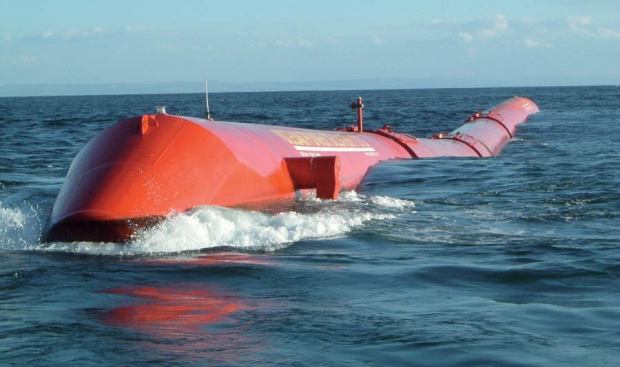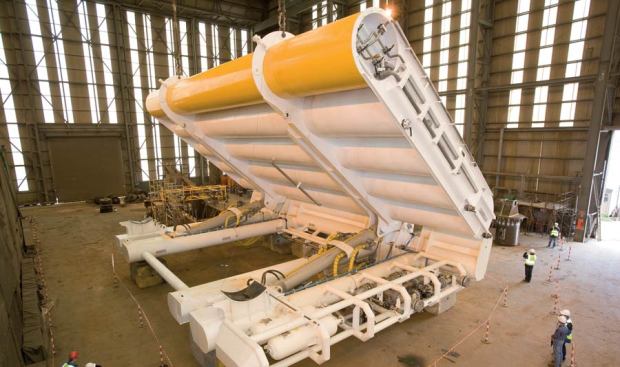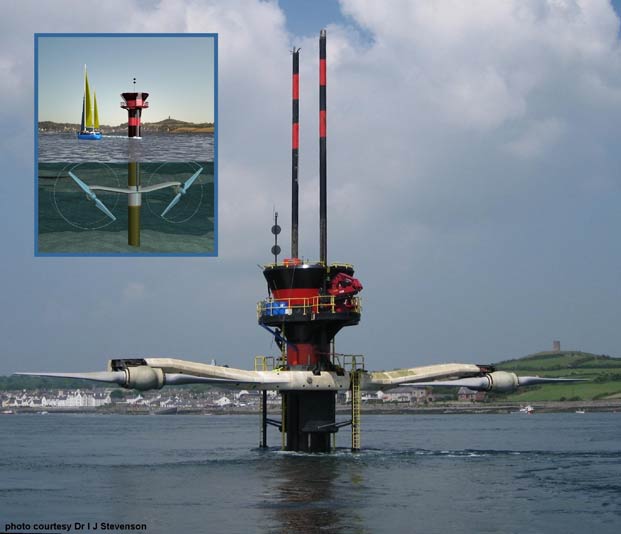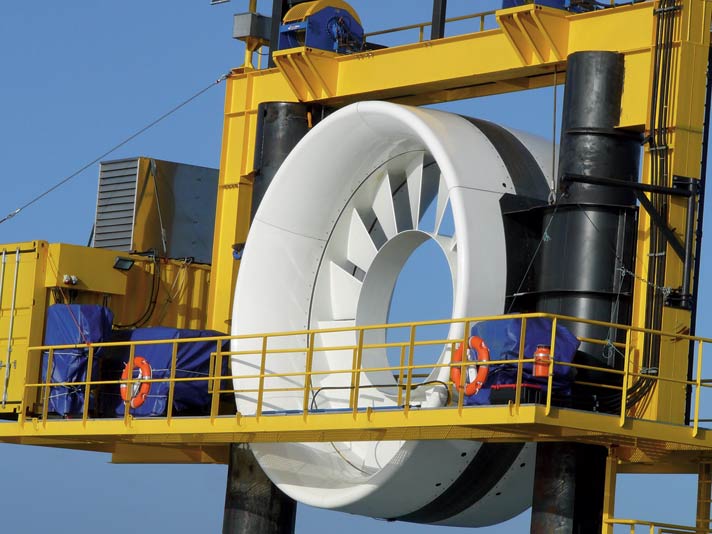Tilting at Water Turbines
A collection of weird and wonderful devices designed to harvest energy from the ocean.
Marine power promises predictable, reliable, clean energy, and there are also some tempting targets for development. The Pentland Firth, which separates the Orkney Islands from the north coast of Scotland, for example, is estimated to contain 60 gigawatts of energy as the Atlantic Ocean is pushed into the North Sea at high tide. Similarly energetic tides exist in New Zealand, Ireland, and Canada.
Efforts to harness the sea for electricity generation are still in their infancy, though. A wide range of devices and methods have been proposed; many have been tested in controlled conditions, such as marine engineering tanks. A few have even made it as far as sea trials.
Rough seas might contain a lot of energy, but they’re also one of the most demanding environments in which to operate machinery. Tidal power is a challenge because the difference in water height between low and high tides varies widely around the world. And, with both tidal and wave power, you have to design a machine that can cope with the environment and a method of transmitting the electricity from sea to land.
The device shown here is the one that started it all. Back in 1974, Stephen Salter, then a professor of engineering design at the University of Edinburgh, developed this device, which floats and has a component that turns as a wave passes under it. This movement operates a high-pressure oil-hydraulic system, pushing oil through a turbine to generate electricity.
Tested extensively in tanks, the duck design was intended to be moored in deep water on “slack” lines that would allow it to move with the sea; however, it is now thought to be too fragile to survive in rough conditions.
Using the same high-pressure oil hydraulics as Salter’s duck, Pelamis (named after a species of sea snake) was developed in the 1990s by Richard Yemm of Edinburgh-based Ocean Power Technology, which has now changed its name to Pelamis Wave Power.
The device, the size of a subway train, consists of a series of tubes fastened together by universal joints. Waves passing underneath make it flex around its joints, and this movement operates the hydraulic pumps and the turbines housed within its sections.
Pelamis was the first wave-energy converter to contribute to commercial electricity production, during a trial at the European Marine Energy Centre in Orkney; it is currently being installed at the world’s first commercial wave farm off Portugal.
Designed to reduce the complexity and cost of wave power, the Oyster device decouples wave movement harvesting from the electricity generation. Unlike Salter’s duck or the Pelamis, the Oyster is meant to be anchored to the sea floor relatively close to the shore, rather than floating on its surface in open seas.
The device is basically a giant flap. As waves pass over the top, the flap opens and closes. This motion pumps a working fluid through a pipeline to an onshore generating station, where it operates the same type of turbine used around the world in hydroelectric power schemes.
Developed by Aquamarine Power in Northern Ireland and based on research from Queen’s University Belfast, the second-generation Oyster device has recently started testing at EMEC. Aquamarine is also investigating the potential for wave power in Oregon.
This device, designed by Ed Spooner of EM Renewables, is based on a linear generator, with the waves moving a “translator”—which holds a set of magnets—up and down relative to a surrounding armature of wire coils.
To get around the problem of the slow movement of waves generating a small current, the translator is spring-loaded and held in position by a second set of magnets. When the energy in the spring exceeds the energy of the magnetic coupling, the translator snaps downward, generating a rapid burst of current.
The world’s first commercially operating tidal electricity generator, SeaGen, is analogous to a wind turbine. The tidal flow turns two underwater twin-bladed “propellers” to generate electricity.
Developed by Marine Current Turbines, based in Bristol, U.K., its prototype device has two 16-meter-diameter rotors and is installed at the narrow inlet of Strangford Lough in Northern Ireland. It generates 1.2 megawatts from a tidal current velocity of 2.4 meters a second, and, MCT claims, it can generate 10 megawatt hours per tide.
OpenHydro’s tidal turbine is designed to sit on the sea floor. The casing of the open-centered design is the turbine, with magnets on the outer edge of its blades moving through a stator in the case.
The turbine needs no lubrication, reducing its maintenance costs. Marine life can swim through the hole in the middle, making it more fish-friendly than bladed designs, the company claims. The device has been tested at the European Marine Energy Center, and in early 2011, four 16-meter-wide turbines were installed off the coast of Brittany, France.
Rolls-Royce is the largest company to dip its toe into tidal stream generation. In 2009, it acquired a Bristol-based subsidiary, Tidal Generation Limited, and has developed a wind-turbine-derived generator designed to be anchored to the seabed.
The company is testing a 500-kilowatt generator at European Marine Energy Center. To date, Rolls-Royce says, the device has pumped over 100 megawatt hours of electricity into Orkney’s grid.
Source: Technologyreview







